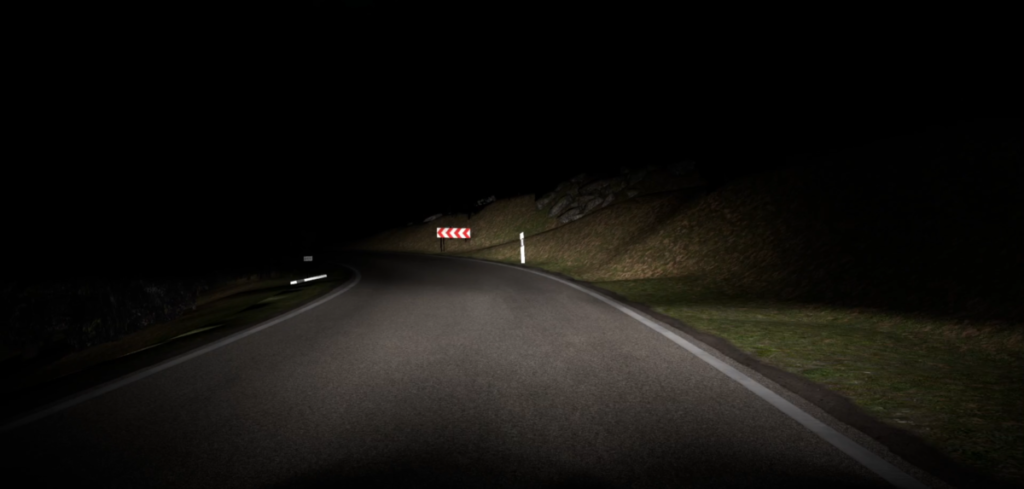Light intensity modeling is now available within rFpro’s simulation environment. According to the simulation software supplier, the new feature greatly improves the accuracy of headlight modeling, providing better definition of individual light intensities to within one degree of resolution in every direction. OEMs will benefit from enhanced simulation of vehicles under low light conditions such as in night-time driving. Tier 1s can expedite their headlight development programs with more accurate modeling.
Previous lighting models comprised a simple inner and outer cone of light. However, the new system uses Illuminating Engineering Society (IES) profiles to define the light in all directions. rFpro has already run up to 50 vehicles modeled with IES lighting in virtual test situations from a single PC.
“The latest vehicle headlight technology incorporates LED arrays that generate a very large number of different beam shapes to provide better visibility without dazzling oncoming traffic. Perfecting this for a new vehicle application through real-world testing is expensive, not reproducible, time-consuming and often conducted at unsociable hours,” explained Josh Wreford, automotive sales manager at rFpro. “Simulation with rFpro software enables both the hardware design and the control strategy to be optimized in a safe and controlled environment without the risks and uncertainties of prolonged night testing. The only physical testing required is for final validation of the product.”
Vehicles with more conventional headlights can also be developed and tested with improved fidelity, especially AVs or vehicles with ADAS, as Wreford noted: “Some of the most high-profile safety concerns regarding autonomous systems have centered on errors in sensor or camera perception under artificial lighting. Improving the fidelity of the light levels at every point in the modeling scenario means the sensor systems can be exercised more thoroughly and the virtual environment can be used more effectively to replace physical testing.”
Vehicle developers will be able to leverage the function in combination with rFpro’s existing high-fidelity road surface modeling, Terrain Server, to test and model their lighting systems and evaluate the perception of sensors in an exceptionally realistic way. The dynamic motions of the vehicle in pitch, roll and heave can be combined with representative light and shade from the interaction of different light sources to create a true-to-life replication of the physical world.
Analysis procedures such as the IIHS (Insurance Institute for Highway Safety) Headlight Test can also now be effectively simulated using rFpro’s solution.
Automotive test equipment provider AB Dynamics welcomes this technology and values the practicality improvements it brings to testing. Professor Pim van der Jagt, technical director AB Dynamics Europe, commented, “The subjective testing of advanced lighting systems can cause many logistical issues, especially in the summer period. This new rFpro functionality almost completely eliminates the need for subjective night driving. This also makes demonstrating new advanced lighting features to senior management and OEM customers much easier.”
According to rFpro, the new tech is being trialled by a major Tier 1 automotive lighting supplier.


